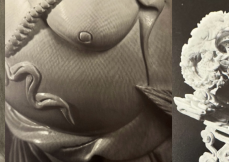
Rubies and Sapphires: Origins and survey work | EN
Rubies and sapphires have captivated humans for centuries with their stunning colors and brilliance. These precious gems are highly sought after for their beauty and rarity, making them valuable both emotionally and financially. The origins and survey of rubies and sapphires; this is an introduction for comprehensive understanding of these fascinating gemstones.
The Geological Origins of Rubies and Sapphires
Rubies and sapphires are both varieties of the mineral corundum (Al2O3), which is composed of aluminum oxide. The primary difference between the two lies in their color; rubies are red, while sapphires can be found in various colors, including blue, pink, yellow, orange-pinkish (Padpardscha) and green. The vibrant colors of these gems are caused by trace elements present during their formation. Corundum forms deep within the Earth's crust, typically in metamorphic rocks.
Rubies and Sapphires: A Fascinating Journey from Mine to Market
Rubies and sapphires are two of the most sought-after gemstones in the world, prized for their stunning colors and durability. These precious stones have captivated humans for centuries, and their allure continues to this day.
The Geological Origins of Rubies and Sapphires
Corundum is formed under high-pressure and high-temperature conditions deep within the Earth's crust. These conditions typically occur in metamorphic rocks, such as gneiss and schist, or in igneous rocks like basalt. Over millions of years, geological processes like plate tectonics and erosion bring these gem-bearing rocks closer to the surface, where they can be mined. Mining for rubies and sapphires is a complex and often labor-intensive process. These gemstones are typically found in alluvial deposits, where they have been transported by water and concentrated in riverbeds, or in primary deposits, where they are still embedded in their host rock.
Alluvial mining involves the use of panning, sluicing, and dredging techniques to extract the gemstones from the sediment. This method is commonly used in countries like Myanmar, Sri Lanka, and Madagascar. Primary deposit mining, on the other hand, requires the use of open-pit or underground mining techniques to extract the gem-bearing rock. The industrial method is more common in countries like Thailand, Australia, and the United States. Most prestigious, Royal blue sapphires and pigeon blood rubies are coming from Mogok mine in Burma (Myanmar), cornflower blue and padparadscha from the Ratnapura mine in Ceylon (Sri Lanka), but also from Kanchanaburi mine in Thailand and Vietnam with his Luc Yen and Quy Chau mines where they also found rubies “Pigeon blood”.
Other production countries are Kenya, Afghanistan, Cambodia, Madagascar, Malawi, Brazil, Pakistan, Montana in USA, with other colors of sapphires such as “medium” and “vivid” blue. Dark sapphires, from blue green to black, are mostly coming from Australia and there is also a small production in the Tessin (Swiss).
Processing and Grading Rubies and Sapphires
Once the rough gemstones have been extracted from the Earth, they undergo a series of processing steps to enhance their beauty and value. These steps include cleaning, sorting, cutting, and polishing. The cutting process is particularly important, as it can significantly impact the gemstone's color, clarity, and overall appearance. Rubies and sapphires are graded based on several factors, including color, clarity, cut, and carat weight. The most valuable rubies are those with a deep, vivid red color, while the most prized sapphires are those with a rich, saturated blue hue. Clarity is also important, as gemstones with fewer inclusions are generally more valuable. The cut and carat weight of the stone can also affect its value, with larger, well-cut stones commanding higher prices.
|










